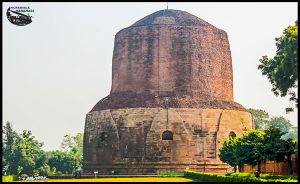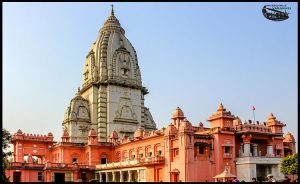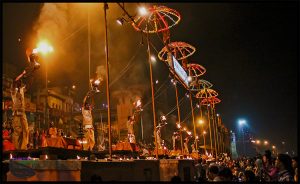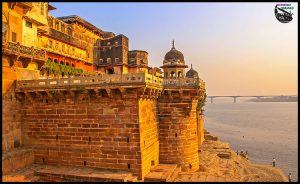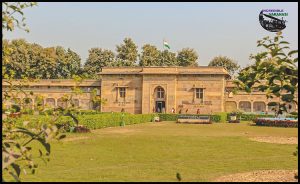The River of Heaven, Holy Ganga, descended to the earth on appeal of King Bhagirath and then entered in the netherworld to restored the dead ancestors of the king. Thus this holy river is flown in three worlds-in the heaven, on the earth and in the netherworld. Banaras is the only place where the trinity of holiness, The Shiva Vishveshvara, The Ganga and The Holy City of Kashi, exists together, making it the most sacred tirtha among all.
People believe that taking a holy dip Ganga means the purification from all sins accumulated in the lifetime. This is the place for salvation, to get rid from the repetitive cycles of life and death, a place for ultimate nirvana “The Moksha”. The ashes of loved ones are brought from far to the Ganges; cremations are also performed on the banks of the river.
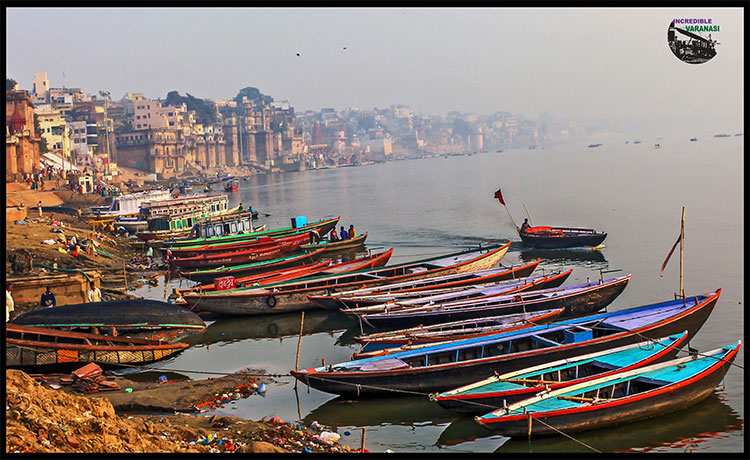
The river banks, popularly known as ghats (numerous stone steps leading to the river) are the most happening places in Varanasi. Basically the ghats are only the stone steps leading to the river. So, what is special about them? In appearance, nothing. But, these are the nearby temples, alleys, rituals, ceremonies and the mythological stories, which make them special and the centre of attraction for million of tourists as well as pilgrims.They are lined with shrines, temples, royal places, devotees, mysterious sadhus (sages), meditating monks, holy cows, street dogs, river boats and many more. If a person wishes to experience the soul of Banaras, then the ghats are the right place to spend the days in Varanasi.
There are about 80 plus river ghats in the span of 6 kms, from Assi Ghat at the Southern End to Adi Keshava Ghat at the Northern End. But very few among these ghats are really significant from a point of tourist or devotee. Here is the list of such 11 famous ghats in Varanasi. Many ghats are the extension of a nearby famous ghat, and they are closely situated to each other. So, by covering the ghats mentioned in this list, a tourist actually covers almost all the ghats in Varanasi.
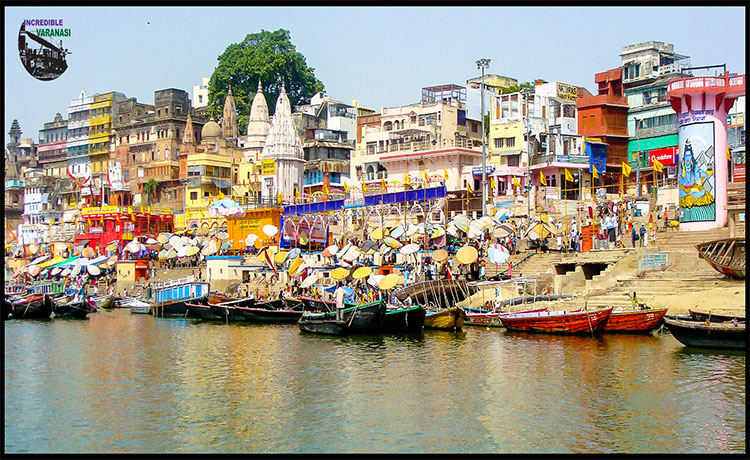
Although there are about 80-plus ghats in Varanasi, but only few of them are the primary center of attraction from a tourist or pilgrims point of view. The most famous ghats of Varanasi are:
1. Assi Ghat: Assi Ghat is the first and one of the important (yet not crowded like others) ghat at the southern end of the city. It is situated in the close vicinity of Banaras Hindu University as well as the famous Lanka Market. Most of the tourists stay at the guest houses scattered in the Assi Ghat area. Each morning and evening, the steps of Assi ghat become a melting pot of culture with foreign tourists, Indian visitors, University students, local people and many vendors roaming all around.
Mythologically, this is the place where the Assi River meets with the Ganga River, thus making it a scared jaltirtha of Kashi. But except a dirty nallah, no such river now exists in its vicinity. Under a peepal tree, a huge lingam of Lord Shiva is situated, where devotees are used to offer their prayers after taking a holy bath in the river. At the top end of the ghat, a small temple is also there, where Shiva Lingam is placed in the form of Asisangameshvara (The Lord of the Confluence at Asi).
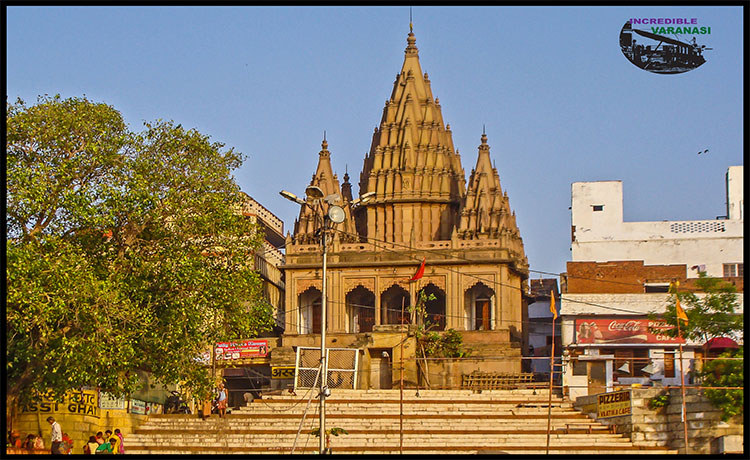
2. Tulasi Ghat: It is named after the great poet Goswami Tulasidas, who wrote some part of Ramcharit Manas while living here. He used to recite the verses of this great epic to the general public at this ghat.
Earlier, this ghat was known as Lolark Ghat, because famous Lolark Tirtha (Lolark Kund) is situated in the near vicinity. Thousand of devotees arrive here on the auspicious day of Lolark Sasthi (6th the day of the bright half of Bhadrapad). It is believed that, if a lady, who is unable to be a mother, takes a holy dip in Lolark Kund, she will surely give the birth to a child. The water of this kund is also having medicinal properties and it is believed that a dip in it, cures all types of skin problems including leprosy.
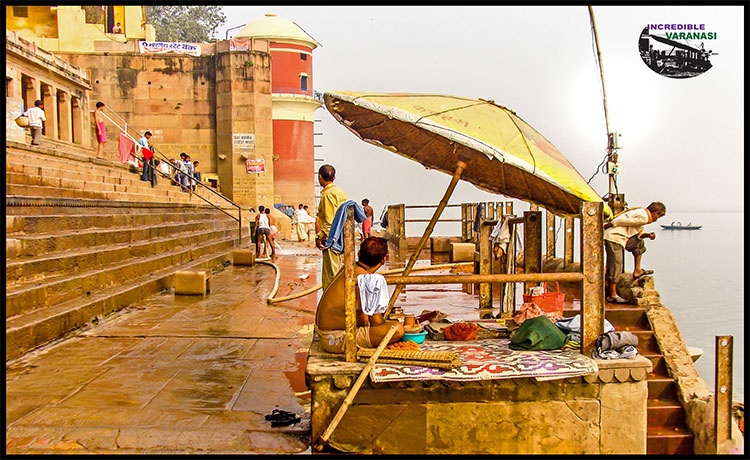
3. Chet Singh Ghat: This ghat derived its name from Maharaja Chet Singh of Banaras. A fort-cum-old palatial building is there on the river bank. This fort witnessed a fierce battle between the troops of Maharaja Chet Singh and Warren Hestings in 1781, that resulted to the defeat of Chet Singh. The building is now in a very dilapidated state and losing its old charm and historical significance.
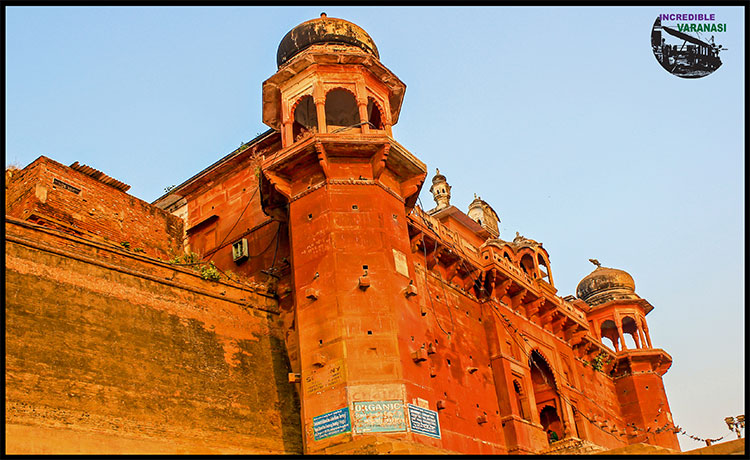
4. Harishchandra Ghat: This is one of the two cremation ghats (other one is Manikarnika Ghat) in Kashi, and sometimes referred as Adi Manikarnika (“the original cremation ground”), and still there exists Adi Manikarnika Tirtha. It is named after the great mythological king, Harishchandra, once worked the cremation ground here for the preservation of truth and charity, but at the end the gods rewarded him and restored his lost throne and his dead son to him.
5. Kedar Ghat: It is one of the greatest jaltirtha of Kashi. On the top of the steps, there is a temple of Kedareshavara, the patron deity of the southern sacred segment of the city called Kedara Khanda. It is widely assumed that Kedar is older than the famous Visheshvara and additionally, it is believed that Kedara survived the great destruction of Aurangzeb in the late 17th century, which further implies that the present temple of Kedara is actually older than the present temple of Kashi Vishwanatha.
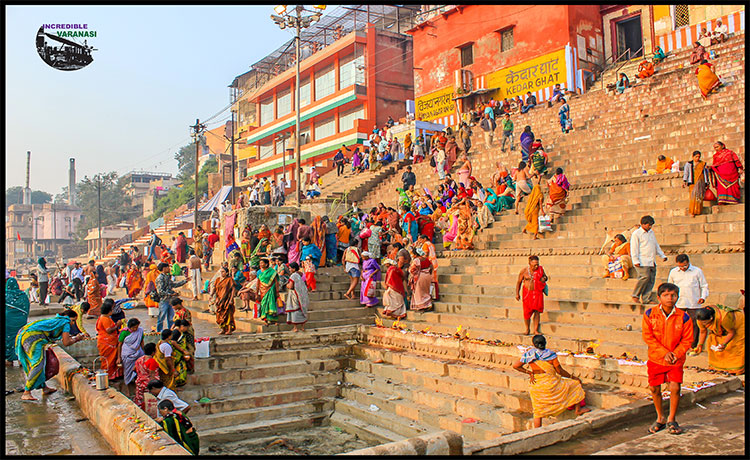
6. Sitala Ghat: The Ghat is known after the Goddess Sitala Temple and marks the southern limit of the famous Dashashvamedha Ghat. This ghat is very famous among the newly married couples who come here for the religious rituals. Followed by rituals in the temple, they also offer their prayers to the Ganges. During the ceremony of Ganga Aarti in every evening, hundreds of people gather on this ghat also in addition to Dashashvamedha and Dr. Rajendra Prasad Ghat.
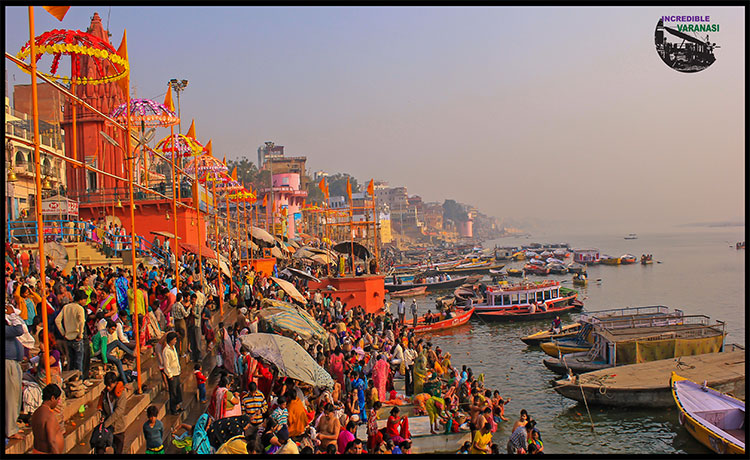
7. Dashashwamedha Ghat: This is the most famous and most active ghat in respect to continuity of traditions and religious rituals. According to the myth, Lord Brahma performed the ten-horses sacrifice at this site. The holiest Kashi Vishwanath Temple is situated nearby to the ghat. Every evening, Ganga Aarti ceremony held here. This is the most happening place of Varanasi.
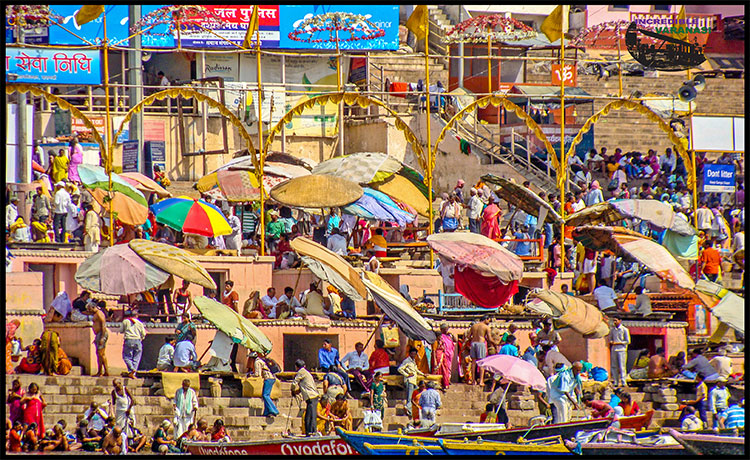
8. Man Mandir Ghat: This ghat is named after the King Sawai Man Singh of Amber (in Rajasthan), who built a magnificent building with exquisite, ornately carved window carvings. The porches and windows of the palace are excellent example of medieval period Rajput and Durg styles.
Later, on the top of the palatial building, the King Sawai Jai Singh built a famous astronomical observatory, famous as Jantar-Mantar of Varanasi. The giant stone instruments were built to study the movement of the sun, the moon, the stars and other heavenly bodies. Total five observatories were built in the cities of Delhi, Ujjain, Mathura, Varanasi and Jaipur. Jantar-Mantar of Jaipur is now a UNESCO World Hetritage Site. But the observatory of Varanasi is in very bad shape now. Most of the copper plates marking angles on the circumference of the instruments have fallen apart, and many of them have already lost their portions. However, the roof of the observatory provides a magnificent view of the river and other nearby ghats.
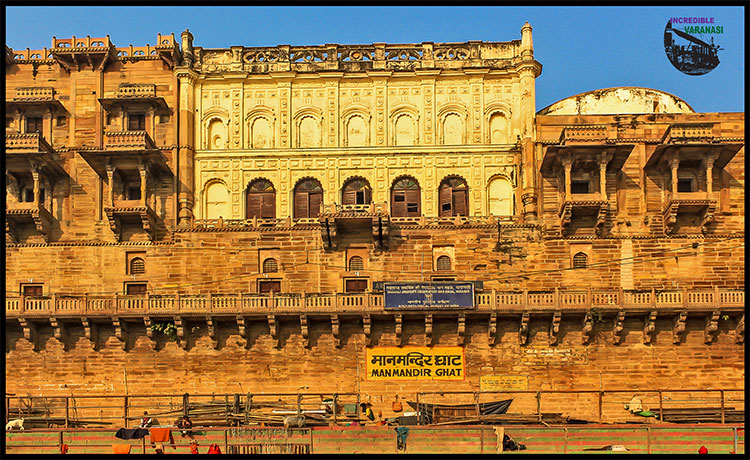
9. Manikarnika Ghat: This is famous as the burning ghat of Varanasi. It is also known as “the great cremation ground” (Mahasmasana). According to puranic mythology Shiva’s crest-jewel (Mani-) and his wife Parvati’s earring (-karnika) fell off into the sacred pool, hence the name Manikarnika. A tale relates that with his disc (Chakra) Vishnu made this pool, which is reflected in the name Chakrapuskarini.
This ghat is the meeting point of Vishnu Kshetra and Shiva Kshetra. From this area, one can easily identify the Vishnu Kshetra of the north and Shiva Kshetra of the south. It is believed that Lord Vishnu performed meditation here in standing pose for thousands of years to please Lord Shiva. Finally Shiva appeared, and by virtue of Vishnu’s boon, settled here. The Vishnu Charanapaduka, a slab of marble representing the footprints of Vishnu, is considered as “the holiest spot in the sacred Kashi”.
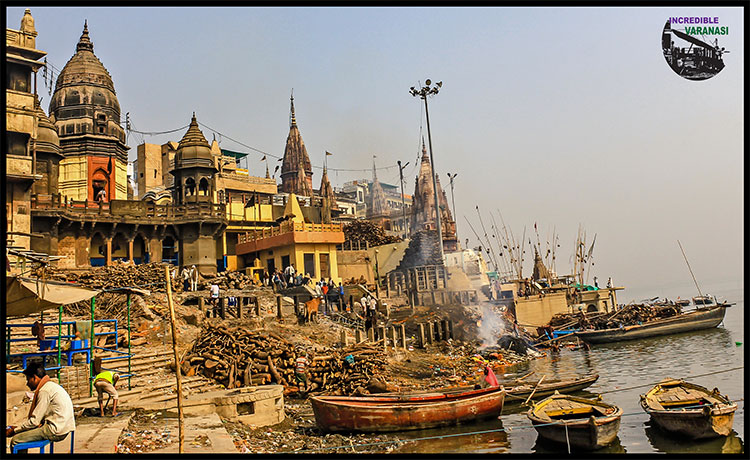
It is believed that Lord Shiva himself uttered the Tarak Mantra (“Prayer of the crossing”) in the ear of every people who dies here, thus liberates them from the cycle of life and death. In a desire of the Moksha (liberation), many Hindu devotees live here in nearby areas during the last days of their lives.
A little over 30,000 corpses are cremated annually in Banaras of which about 28,000 are cremated at Manikarnika cremation Ghat, and the rest at Harishchandra Ghat in the south. Cremating a dead body consumes on average about 500kgs of wood. Every dead body gets registered at the nearby office, followed by the negotiations and bargaining with the funeral priest (Dom) who gives the sacred fire for funeral.
10. Panch Ganga Ghat: It is believed to be the meeting point of five holy water bodies: The Ganga, The Yamuna, The Sarsvati, The Kirana and The Dhupapapa, among which only the first one is visible and rest are vanished.
This was the chief resort of a great teacher of Vedanta, Ramananda to whom Kabir, a great reformist bhakti poet, accepted as guru. Ramananda’s monastery is still there. Goswami Tulasidas also had passed a number of good years of his life at this ghat where he composed the famous Vinaya Patrika (“The Petition to Rama”), describing the glory of Vindu Madhava temple, that was here before demolition in 1673.
Even today this is the second most important ghat after Dashashvamedha, with respect to devotees paying visit and the merit perceived by the people.
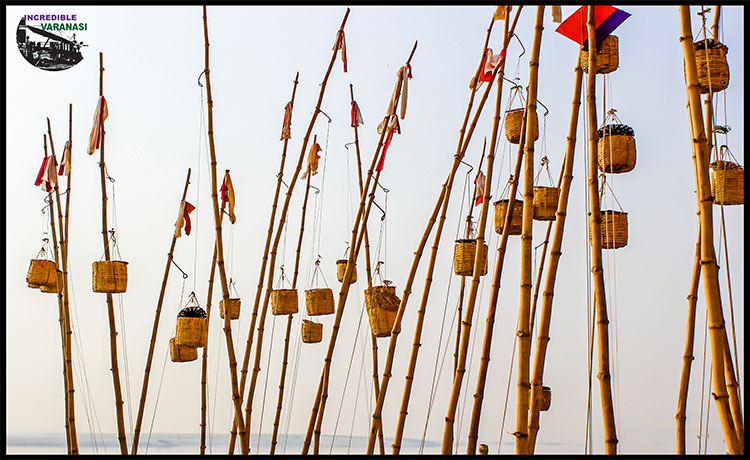
11. Raj Ghat: Till 12th century this was a very active ghat for religious festivities and transport, however since then the city spreads southwards and in span of time the other ghats became more prominent. Its importance as ferry ghat was maintained till 1 January 1887 when Lord Duffrin Bridge (road-cum-rail) was built. In 1948 the bridge’s name changed to Malaviya Bridge.
It is also an important archaeological site with lot of excavation is in progress in nearby areas. A grand temple of Saint Ravidasa, who was born in the southern edge of the city in a village Sir Karahia, is made in 1986; at this place his birth day is celebrated on the full moon day of Magha.
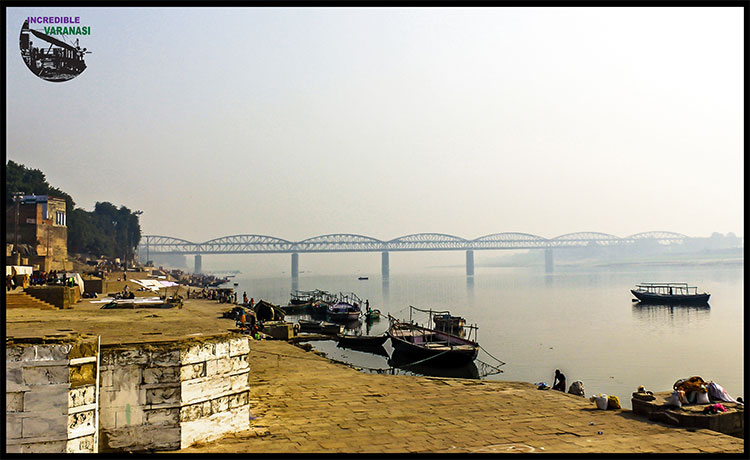
Varanasi practically lives by its ghats, they are the true pulse of Kashi. The six-kilometers long crescent-shaped bank of the holy river have always been a center of attraction in every corner of the world. The ghats of Banaras have an incomparable mix of charm and spirituality found nowhere else on the earth. As long as Bhole Vishwanath continues to shower his blessings on the sacred city of Kashi, the charm and sanctity of these ghats, the river, the buildings, the people, the rituals, everything else, will continue to attract millions of people every year to this dusty city in India.


